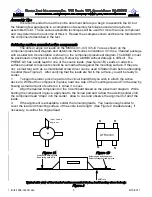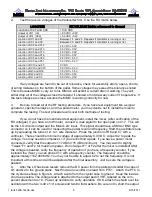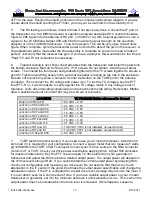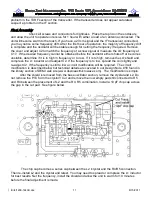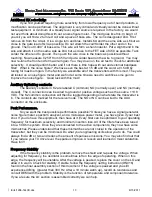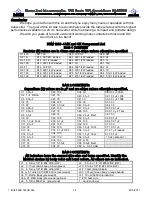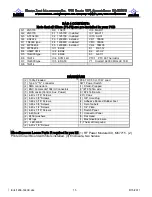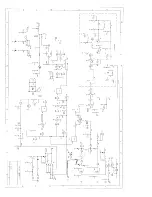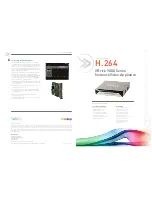
/Kits/1296-144CK.doc
13
8/15/2011
Additional RX selectivity:
If you find yourself requiring more selectivity from lower frequency out of band products, a
modification can be performed. The alignment is very critical and virtually cannot be done without
test equipment. A minimum of a steady level, signal source is required. In the factory, we would
not ever think about doing this with out a noise figure meter. The mod goes like this. In bag 3 of
your kit you will find a 2 turn red coil and a piece of buss wire. The coil is designated L6A. First
remove L6 from the circuit. It is a single turn and blue. Install L6A and the same side as L6 but as
close to the gate lead of Q3 as possible. Do not stretch the coil! Solder the other end on the
ground. Then cut 0.400” of buss wire. This wire will form a shunt inductor. Put a slight bend in the
wire and attach it on the same side as L6A but as close to the FET side of C59 as possible. Tack
solder the other end to ground. Then push the wire close to the boars as possible without
touching. Now measure 0.250” from C59 and put a solder bead on the wire to ground. You may
now re-tune the front end for maximum gain. You may do an on the air test to check for additional
selectivity. It should perform better and if not there is little hope with out and external bandpass
filter! What is the noise figure? We have seen the best at 1.5 dB and the worst at 3.5 dB by
tuning for maximum gain. In the factory we assemble all of the transverters with this mod. They are
all tested on a noise figure meter and we find at some time we need to sacrifice some gain to
improve the noise figure. Good luck with this mod!
Auxiliary Switching contacts
:
The auxiliary contacts in K2 are labeled C (common) NO (normally open) and NC (normally
closed). The C connection can be wired to ground or positive voltage such as the source +13.8
VDC. The K2 common connection will then be toggled depending on what state the transverter is
in. The contacts are marked for the receive mode. The NO or NC can be wired to the AUX
connector on the enclosure.
Peak Performance.
So you want the best possible performance possible? Unless you have a signal generator,
noise figure meter, spectrum analyzer, and a microwave power meter, you have given it your best
shot. If you do have this equipment, then have at it. Every filter can be optimized to your operating
frequency for maximum selectivity and minimum insertion loss. All of the filters have been tuned
into a 50 Ohm system. Once they are connected to the active components, they now have some
mismatches. Please understand that these mismatches are not crucial to the operation of the
transverter, but they can be minimized. Do what your engineering skills allow you to do. You could
always find a dB or two and reduce the amount of spurious emissions. You may also find out that
if you reduce your TX drive level, the spurious improve. A lesson well learned in mixer saturation.
Have fun!!
Frequency Stability
If the frequency stability is the problem, remove the shield and re-peak the voltage. When
adjusting for frequency, the oscillator is sometimes left on the edge of operating. When on this
edge, the frequency will be unstable. After the voltage is peaked, replace the cover on the LO and
allow it to warm. Check for stability. If stable, follow the frequency netting instruction (DN016)
found in the final assembly section of this document. If the voltage is peaked and you still
experience drifting (greater than 300 Hz. After a 10 minute warm up), record its tendencies and
consult DEMI with the problem. Stability is the function of temperature and component tolerance.
If you are sure the LO section is assembled correctly we can help.
Summary of Contents for 1296-144 CK
Page 16: ......



